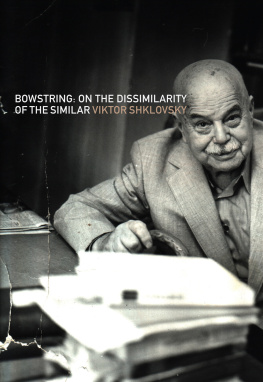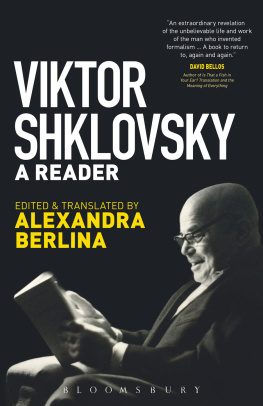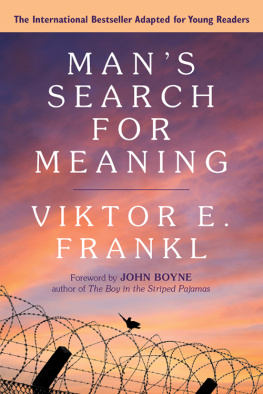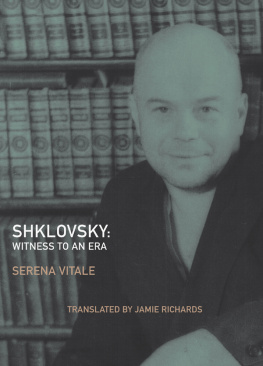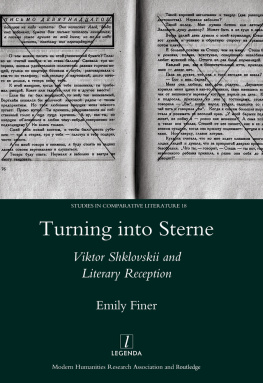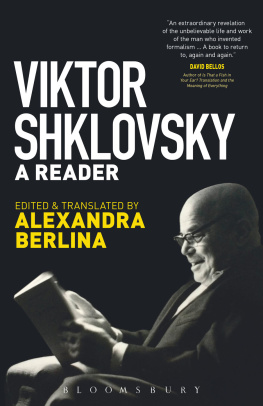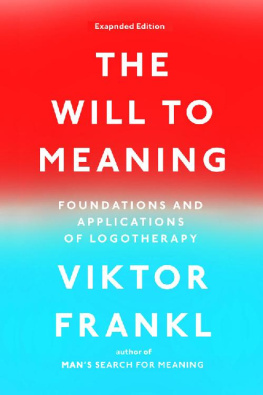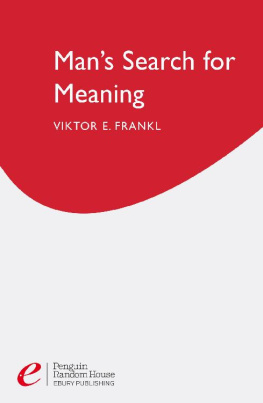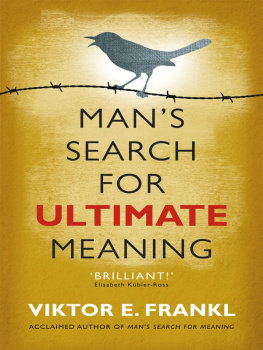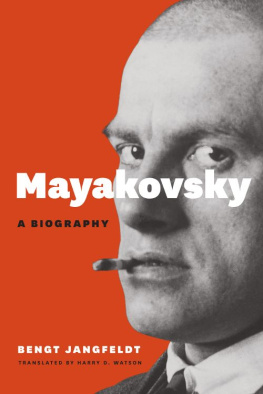Originally published in Russian as Tetiva: o neskhodstve skhodnogo , Sovetskii pisatel, 1970 Viktor Shklovskys Russian text copyright 1985 by Varvara Shklovskaya-Kordi Translation rights into the English language are granted by FTM Agency, Ltd., Russia, 1994
English translation copyright 2011 by Shushan Avagyan
All rights reserved
Shklovskii, Viktor, 1893-1984.
[Tetiva. English]
Bowstring: on the dissimilarity of the similar / by Viktor Shklovsky; translated by Shushan Avagyan. 1st ed.
p. cm.
Includes bibliographical references.
1. LiteratureHistory and criticismTheory, etc. I. Title.
Partially funded by a grant from the Illinois Arts Council, a state agency, and by the University of Illinois at Urbana-Champaign
TRANSLATORS PREFACE
Giving up giving, in other words, because in the first place the thing does not belong to you, and in the second it will not in any case have been handed over intact.
In a conversation with Viktor Shklovsky in 1981, his former student Marietta Chudakova asked him about living and working under the regime of Stalin. Just before 1937, he recalled, an acquaintance of mine who worked in the Cheka (Soviet Secret Police) brought me a file he wanted to show me, with documents against me. I saw that they were doing a poor job, that there was a lot they didnt know about me. But they knew enough to make me a center (of a conspiracy).
Shklovsky, of course, foresaw the age of terror as early as the 1920s, when he had to flee to Finland, then to Berlin, to escape arrest for the charges of his anti-Bolshevik activitiesas described in A Sentimental Journey: Memoirs, 19171922 (1923). Many Russian intellectuals from the pre-revolutionary period emigrated during those years, most of them settling in Europe and North Americain 1919, the Nabokovs escaped to London, then to Berlin; Ivan Puni and his wife went to Finland, eventually arriving in Berlin in 1921. Marc Chagall left Russia for good in 1922, and the same year Marina Tsvetaeva emigrated with her family to Berlin, later to Prague, and then to Paris. In 1920, Roman Jakobson moved from Moscow to Prague to continue his doctoral studies and eventually ended up in New York. Some expatriates, however, like Shklovsky and Tsvetaeva, found exile intolerable and were compelled to return home.
Shklovsky went back to Russia in the fall of 1923, when his petition to the Central Committee of the Communist Party received a favorable response, the details of which are recounted in his epistolary novel Zoo, or Letters Not About Love (1923). But the home-coming was excruciatingly difficult; for one thing, it meant being a witness to the degradation and death of many of his friendsincluding Mayakovsky, who committed suicide on April 14, 1930. It was the beginning of the Great Purge, which was characterized by widespread government surveillance, constant suspicion of possible saboteurs, public trials, and executions. The madness and confusion of this period lurks in the background of Shklovskys part-fictional, part-autobiographical book Poiski optimizma (Hunt for Optimism, 1931), which he ends with the following sinister remark: Life is difficult. Its big. One should live as long as possible. Lets take care of one another in the name of this great epoch. We have to be calm, like being at war or inside an incubator.
Compared to the epoch of revolutions, the period between the 1930s and 1950s was relatively quiet, but dramatic in other ways. It became excessively difficult and dangerous for Shklovsky to publish anything after the heavy criticism of his book on Mayakovsky ( Mayakovsky and His Circle , 1940) for its emphasis on the influence of Futurism and its attempt to rehabilitate discredited Formalist theories. Shklovsky was evacuated to Alma-Ata during World War II, and later he was greatly affected by the death of his son, Nikita, who was killed on February 8, 1945, a few months before the end of the war. The final blow came with the campaign against the so-called Cosmopolites in 1949, when Konstantin Simonov attacked Shklovskys Gamburgsky Schyot (Hamburg Account, 1928) for being an utterly bourgeois book that was against Soviet art. With the exception of documentary screenplays and several translations of works from other Soviet nations and languages, almost nothing written by Shklovsky appeared in print between 1949 and 1953. To get a sense of how Glavlit (the State Committee on Censorship) worked to silence writers, we only need to look into the case of Yefim Etkind, who in 1968 dared to make the following statement in his introduction to the two-volume collection Mastera russkogo stikhotvornogo perevoda (Masters of Russian Verse Translation):
During a certain period, particularly between the 19th and 20th [Party] Congresses, Russian poets were deprived of the possibility of expressing themselves to the full in original writing and spoke to the reader in the language of Goethe, Orbeliani, Shakespeare, and Hugo. Whatever the reason, the 1930s, the 1940s, and the 1950s were fabulously productive for the development of verse translation in the USSR.
The above might seem a casualif somewhat ironicaside, but because of those two short sentences, an entire printing of twenty-five thousand copies of two volumes was rebound; three members of the editorial staff of Poets Library, which publishes a prestigious series of scholarly editions of Russian poets, were immediately fired; the Editor-in-Chief was soon forced to retire; those held responsible were asked to publicly recant; Etkind was called to a prorabotka , a public criticism and rebuke, by his colleagues at the Herzen Institute in Leningrad, and was subjected to a series of public humiliations, including dismissal from his university post, until he emigrated in 1974. Despite the modest freedoms that were allowed in the arts during the Khrushchev years, Stalins system still persisted even after his deathand it was in this climate that Shklovsky was writing Bowstring .
Myths do not flow through the pipes of history, writes Shklovsky, they change and splinter, they contrast and refute one another. The similar turns out to be dissimilar. Published in Moscow in 1970 and appearing in English translation for the first time, Bowstring is a seminal work, in which Shklovsky redefines estrangement ( ostranenie ) as a device of the literary comparatistthe person out of place, who has turned up in a period where he does not belong and who must search for meaning with a strained sensibility. The books title comes from Heraclitus: They do not understand how that which differs from itself is in agreement: harmony consists of opposing tension, like that of the bow and the lyre. Comparison, in this sense, does not involve the assimilation of someone elses othernessrather, it catalyzes ones own otherness and the otherness of ones own language. As Shklovsky experiments with different genres, employing a technique of textual montage, he mixes autobiography, biography, memoir, history, and literary criticism in a book that boldly refutes mechanical repetition, mediocrity, and cultural parochialism in the name of art that dares to be different and innovative. Bowstring is a brilliant and provocative book that spares no one in its unapologetic project to free art from conventionality.

